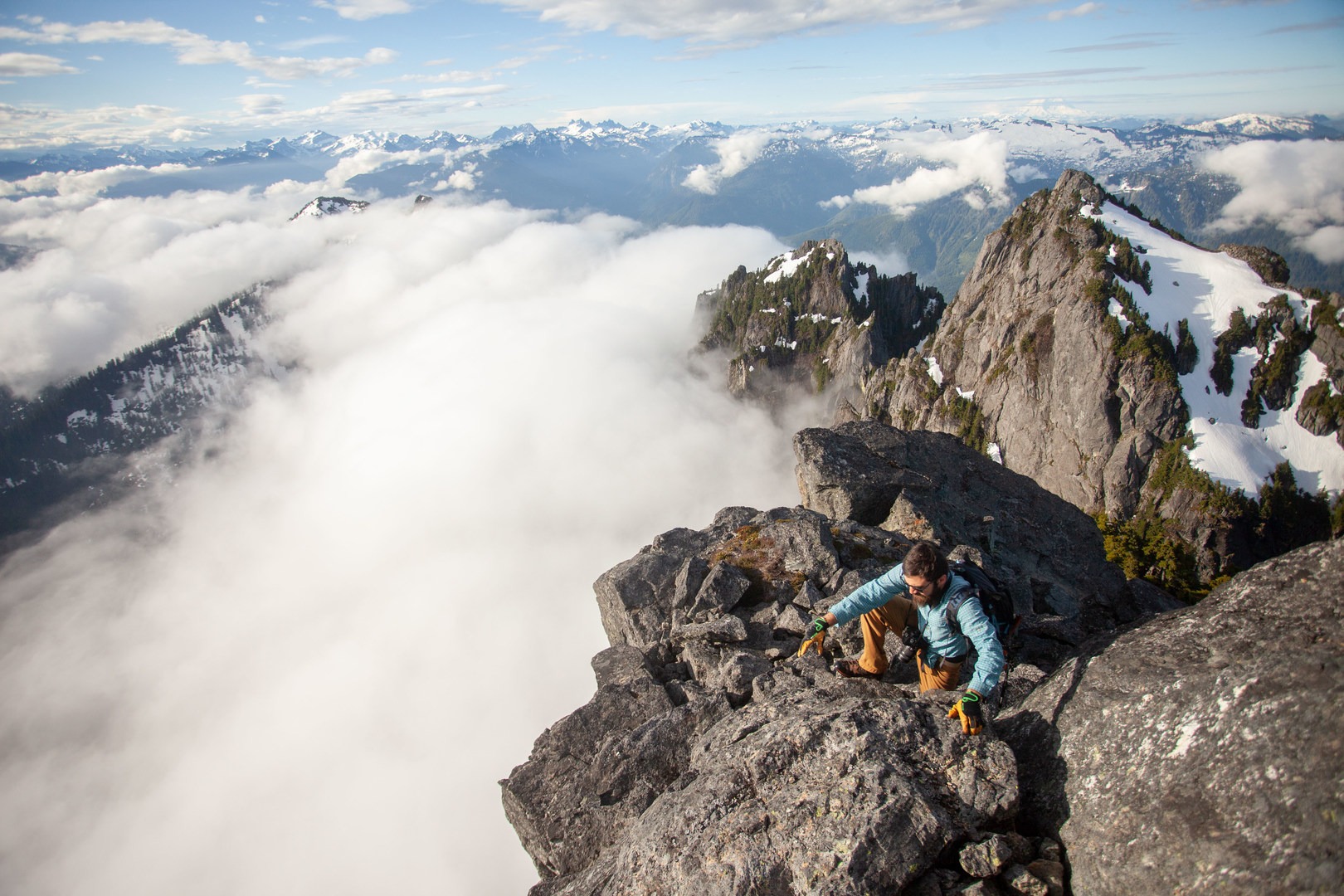You are here
Mount Baring is an extremely recognizable peak from Highway 2 and the Everett area, with its characteristic bunny-ears shape. Baring is extremely easy to access - only a few miles off the paved road - and provides a great way to practice your Cascadian mountaineering skills, often requiring snow travel and some fun exposed scrambling. However, Baring is relatively rarely done because requires such a steep climb up a poorly maintained trail. Nevertheless, many of the more interesting peaks in the Cascades have similar (or worse) climbs, so Baring is a great way to figure out if you like this sort of peakbagging or want to stick to the more maintained areas.
Notes
- Seasonality: Baring is best climbed when the snowline is around 5,000 feet. When this is the case, the steepest climb through the trees will be dirt, but the upper chute will be snow. If you do this climb earlier, you'll find both potentially sketchier avalanche conditions and that the scramble up to 4,000 feet will be quite difficult when wet and snowy. If you do it later you'll have to climb up all the talus in the gully without the benefit of snow to cover it all up. So while Baring can be climbed between May and September (or year-round if you're a real masochist), the window for pleasant climbing is a bit narrower.
- Gear: Depending on when you choose to do the climb, you'll likely need to bring an ice axe and crampons, plus your normal Cascade hiking gear. Some people choose to bring a rope or handline for the headwall above the notch, though this is a personal call.
The Climb
From the Barclay Lake/Baring trailhead, you'll immediately break off the main trail to Barclay and head south along an abandoned forest service road. However, this only lasts a quarter mile before the trail breaks right and heads straight up the slope. From here, you'll follow flagging and a rough trail straight up, scrambling over roots and loose dirt. This trail doesn't waste any time and climbs an absurd 1,700 feet in a half mile. While this trail is pretty demoralizing, it is also super-efficient at getting you up quickly! Once you hit the ridge at 4,000 feet, the trail gets a lot better, and winds its way along the top of the narrow ridge through huge trees. It takes a mile to climb another 800 feet, where you'll leave the trees, cross over a small divide, and reach the talus/snow slopes.
Hopefully, you timed your climb right seasonally, and you'll be on snow. You'll cross the wide basin before climbing east up the obvious couloir/gully. If you're on snow, make sure you're dialled on your self-arrest skills before you climb too high! 700 feet up the couloir/gully, you'll reach a notch between North and South Baring. South Baring is rarely climbed, as it requires a heady vertical scramble from this notch, and this report won't describe it. From this notch, you'll head north. If it's snowy, you'll have a surprisingly steep snow headwall, so take your time and kick big steps. Some people will protect this section with a rope or handline. Soon, the angle will lessen, and you'll transition onto a fun ridge scramble. There's not really a required route up this last section, just ramble your way uphill and soon you'll reach the summit!
From the summit, admire the insane drop off the north face of Baring down to Barclay Lake. This is one of the steepest vertical faces in the lower 48, and you'll feel the exposure, hanging 3700 feet over Barclay Lake below you. This face features a 20 pitch rock climb, only been climbed a few times, called "Vanishing Point" and rated a sandbagged 5.12b R.
You'll be able to see a huge variety of peaks surrounding you, especially the nearby Mount Index, which is even scramblier, sketchier, and thrashier than Baring!
Once you've enjoyed the views, head back down the route you climbed.
Logistics + Planning
Current Weather: Powered by Dark Sky






























Comments
Sign In and share them.